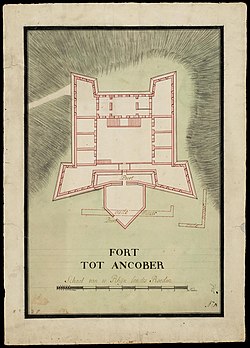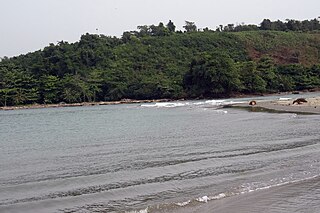
The Ankobra River is primarily situated in Ghana. Rising north east of Wiawso, it flows about 190 kilometres (120 mi) south to the Gulf of Guinea. Its entire course is in south Ghana. Near its mouth are the remains of Fort Elize Carthago, a Dutch trading post abandoned in 1711,

The Dutch Gold Coast or Dutch Guinea, officially Dutch possessions on the Coast of Guinea was a portion of contemporary Ghana that was gradually colonized by the Dutch, beginning in 1612. The Dutch began trading in the area around 1598, joining the Portuguese which had a trading post there since the late 1400s. Eventually, the Dutch Gold Coast became the most important Dutch colony in West Africa after Fort Elmina was captured from the Portuguese in 1637, but fell into disarray after the abolition of the slave trade in the early 19th century. On 6 April 1872, the Dutch Gold Coast was, in accordance with the Anglo-Dutch Treaties of 1870–71, ceded to the United Kingdom.

The Treaty of Butre between the Netherlands and Ahanta was signed at Butre, Dutch Gold Coast on 27 August 1656. The treaty regulated the jurisdiction of the Netherlands and the Dutch West India Company over the town of Butre and the surrounding country of Upper Ahanta, creating a Dutch protectorate over the area, and permitting the establishment of Fort Batenstein. The treaty lasted until the Dutch departure from the Gold Coast in April 1872.

The Treaty of Axim was concluded between the Netherlands and the chiefs of Axim in the western region of the Gold Coast and signed at Fort St. Anthony near Axim on 17 February 1642. The treaty regulated the jurisdiction of the Netherlands and the Dutch West India Company in the town and polity of Axim after the Dutch West India Company had successfully attacked the Portuguese who were the occupants of Fort St. Anthony in the town. Over time, the agreement was in part superseded and replaced by new contracts and agreements. The treaty did remain the basis for Dutch jurisdiction and political relations between Axim and the Dutch until the latter left the Gold Coast in 1872.

Fort Saint Anthony was a fort built by the Portuguese in 1515 near the town of Axim, in what is now Ghana. In 1642, the Dutch captured the fort and subsequently made it part of the Dutch Gold Coast. The Dutch expanded the fort considerably before they turned it over, with the rest of their colony, to the British in 1872. The fort is now the property of the Ghanaian state and is open to the public.
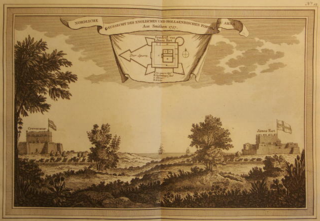
Ussher Fort is a fort in Accra, Ghana. It was built by the Dutch in 1649 as Fort Crèvecœur, and is a two day's march from Elmina and to the east of Accra on a rocky point between two lagoons. It was one of three forts that Europeans built in the region during the middle of the 17th century. Fort Crèvecœur was part of the Dutch Gold Coast. The Anglo-Dutch Gold Coast Treaty (1867), which defined areas of influence on the Gold Coast, transferred it to the British in 1868. Because of its significance in the history of European colonial trade and exploitation in Africa, the fort was inscribed on the UNESCO World Heritage List in 1979.

Fort Amsterdam is a former slave fort in Abandze, Central region, Ghana. It was built by the English between 1638 and 1645 as Fort Cormantin or Fort Courmantyne, and was captured by admiral Michiel de Ruyter of the Dutch West India Company in 1665, in retaliation for the capture of several Dutch forts by the English Admiral Holmes in 1664. It was subsequently made part of the Dutch Gold Coast, and remained part of it until the fort was traded with the British in 1868. The Fort is located at Abandze, on the north-east of Cape Coast in the Mfantseman District of the Central Region of Ghana. Because of its testimony to European economic and colonial influence in West Africa and its historical importance in the Atlantic slave trade, the fort was inscribed on the UNESCO World Heritage List in 1979 along with other forts and castles in Ghana.

Fort Batenstein was a fort and trading post established by the Dutch on the Gold Coast in 1656. It was situated near Butre. The fort was ceded with the entire Dutch Gold Coast to Britain in 1872.
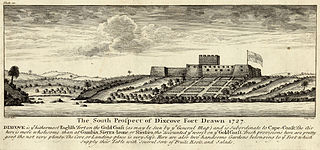
Fort Metal Cross, originally Fort Dixcove, is a military structure located on a promontory at the fishing community of Infuma in Dixcove, in the Western Region of Ghana. Because of its history in the Atlantic slave trade and its testimony to European-African trade, the Fort was included as one of the Forts and Castles of Volta, Greater Accra, Central and Western Regions that became a World Heritage Site in 1979.
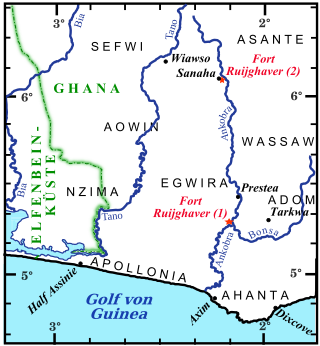
Fort Ruychaver, also Fort Ruijghaver, was a Dutch trading post in the hinterland of the Gold Coast, in contemporary Ghana. It existed between 1654 and 1660 on the banks of River Ankobra. The name of the post goes back to Jacob Ruijghaver, the director of the Dutch West India Company's possessions on the Gold Coast, who ordered its establishment.
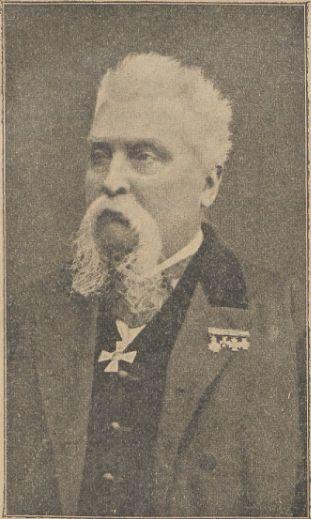
Cornelis Johannes Marius Nagtglas was a Dutch politician and civil servant, who made a career in the administration on the Dutch Gold Coast. After originally beginning his career at the advanced age of 36, he was promoted through the ranks to eventually become Governor of the Dutch Gold Coast in 1858. He retired to the Netherlands in 1862, but returned to the Gold Coast as governor in 1869, to restore order in the embattled colony. In 1871, he left the Gold Coast again, one year before the transfer of the colony to the United Kingdom.
The Dutch–Ahanta War was a conflict between the Netherlands and the Ahanta between 1837 and 1839. Beginning with a mere economic dispute between the Ahanta and the Dutch, who were based at the Dutch Gold Coast, the conflict ended with the hanging of Ahanta king Badu Bonsu II and the reorganization of the Ahanta state, establishing a Dutch protectorate over the Ahanta.
The Treaty of Asebu was concluded in 1612 between the Dutch Republic and the chiefs of Asebu on the Gold Coast of Africa. The treaty was the first among several concluded between the Dutch and the peoples of the Gold Coast, and marked the beginning of a 260-year period of Dutch presence on the Gold Coast.

Christiaan Ernst Lans was a soldier in the Royal Netherlands Army who by royal decree of 2 December 1832 was appointed Commander of the Dutch Gold Coast. He took office on 11 May 1833 and served until 1836, upon which he returned to the Netherlands.
The Kingdom of the Netherlands has an embassy in the Republic of Ghana. It has a role in promoting trade between the countries.

The Sisili River is one of the major rivers of northwestern Ghana, along with the Black Volta and Kulpawn Rivers. Historically, the Nakong area of the Sisili River, on the east side, has been subject to "Zabarima slave raids led by Gazare and Babatu".
Gold Coast Euro-Africans were a historical demographic based in coastal urban settlements in colonial Ghana, that arose from unions between European men and African women from the late 15th century – the decade between 1471 and 1482, until the mid-20th century, circa 1957, when Ghana attained its independence. In this period, different geographic areas of the Gold Coast were politically controlled at various times by the Portuguese, Germans, Swedes, Danes, Dutch and the British. There are also records of merchants of other European nationalities such as the Spaniards, French, Italians and Irish, operating along the coast, in addition to American sailors and traders from New York, Massachusetts and Rhode Island. Euro-Africans were influential in intellectual, technocratic, artisanal, commercial and public life in general, actively participating in multiple fields of scholarly and civic importance. Scholars have referred to this Euro-African population of the Gold Coast as "mulattos", "mulatofoi" and "owulai" among other descriptions. The term, owula conveys contemporary notions of "gentlemanliness, learning and urbanity" or "a salaried big man" in the Ga language. The cross-cultural interactions between Europeans and Africans were mercantile-driven and an avenue to boost social capital for economic and political gain i.e. "wealth and power." The growth and development of Christianity during the colonial period also instituted motifs of modernity vis-à-vis Euro-African identity. This model created a spectrum of practices, ranging from a full celebration of native African customs to a total embrace and acculturation of European culture.
Jacobus van der Puije was an administrator of the Dutch West India Company. He became President of the council of the Dutch Gold Coast in 1780.
Hubertus Varlet was a Dutch architect and colonial administrator, who served on the Dutch Gold Coast. In his capacity as master of works and stores, he rebuilt Fort Crèvecoeur in Accra in 1839. Following the promotion of Anthony van der Eb to governor of the Dutch Gold Coast, Varlet succeeded him as the second vice governor for the Ahanta protectorate, which the Dutch had proclaimed following the conclusion of the Dutch–Ahanta War.
